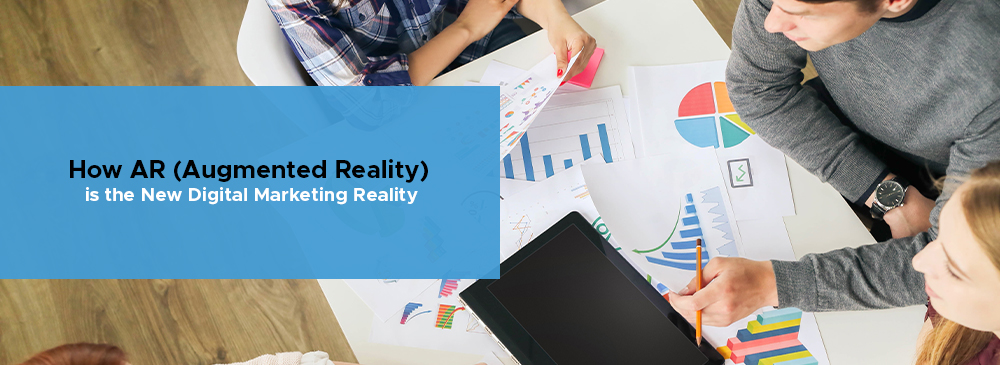Website design, just like any other visual discipline, constantly undergoes transformation influenced by factors such as technological advancements, changing user preferences, and emerging creative trends. Understanding the dynamics of these elements is crucial for both web designers and businesses aiming to establish a strong online presence.
As 2024 begins, we’ve identified 10 trends that are shaping the future of website design. What are these trends that are set to redefine the digital experience? Let’s find out!
1. Immersive User Experience with 3D Elements
The use of 3D elements is rapidly gaining ground in website design. This trend incorporates the use of 3D graphics, animations, and immersive product displays, improving user engagement through enhanced interactivity. 3D elements contribute to a visually striking aesthetic and a dynamic, memorable user experience. This surge in 3D usage signifies a progressive shift towards more interactive and visually compelling online design, marking an evolution in the Internet. This trend attracts visitors and provides a more memorable experience.
2. Dark Mode Dominance
Dark mode has become more than just a trend; it’s now a staple in modern website design. It has evolved from being a design trend to becoming a fundamental feature in modern website design. Visual comfort and a desire for cross-platform consistency, dark mode has secured its place as a staple that enhances both the appeal and usability. It reduces eye strain and improves readability. Likewise, it adds a touch of sophistication to the aesthetics. As users increasingly appreciate the option to switch between light and dark modes, expect more websites to adopt this feature this 2024.
3. Minimalistic and Clean Designs
The minimalist approach to web design will continue this 2024. It’s simple, clean, and focuses on essential elements. Minimalism aligns with contemporary user preferences. This design philosophy enhances user experience through streamlined interfaces, faster loading times, and improved readability. Its versatility ensures compatibility with various devices and screen sizes, promoting a consistent and user-friendly experience. As users seek visual clarity, the minimalist design trend will provide, emphasizing the appeal of a less-is-more approach in crafting compelling digital experiences.
4. Augmented Reality (AR) Integration
With augmented reality (AR) technology, websites now can offer users interactive and personalized experiences. This approach transforms how users engage with digital content, allowing them to interact with virtual elements overlaid on the real world. From virtual try-on experiences in e-commerce to interactive product demonstrations, AR enhances engagement by providing dynamic and real-time interactions. As AR continues to evolve, its integration into websites marks a creative leap in creating immersive and tailored online experiences.
5. Micro-interactions for Enhanced User Engagement
Micro-interactions, or feedback loops responding to user actions, are gaining popularity in web design. These nuanced elements enhance the user experience by providing instant, visually pleasing responses to interactions. From a button changing color upon hover to a confirmation animation after a form submission, micro-interactions contribute to a more intuitive and interactive experience. As websites aim for user-centric designs, these impactful details add aesthetic and create a responsive interface, making a connection between users and the digital platforms they interact with.
6. Voice User Interface (VUI) Optimization
The use of voice-controlled devices underscores the importance of optimizing websites for voice search and interaction. The integration of voice user interfaces (VUIs) becomes paramount, enabling users to navigate websites through voice commands. This addresses accessibility needs and aligns with the growing demand for hands-free interactions. By using voice-driven interactions, websites make it convenient and practical, especially for physically challenged users. VUIs ensure websites remain attuned to the preferences of users seeking seamless, efficient, and voice-driven online use.
7. Content and User Journeys
Personalized content to individual user preferences and behaviors is set to gain fame. This trend shows a shift towards user experiences, leveraging data-driven insights to deliver custom content. By understanding user preferences, browsing history, and behavior, websites can present relevant information, fostering engagement and satisfaction. The integration of AI and machine learning helps in the ability to predict user needs, offering a more personalized online journey. This trend improves user satisfaction and establishes a deeper connection between individuals and the content they consume.
8. Accessibility as a Priority
The ongoing commitment to inclusive design emphasizes features like alt text for images, keyboard navigation, and adherence to accessibility standards. This collaborative effort aims to create a web environment that is welcoming and navigable for diverse audiences. As digital experiences evolve, prioritizing accessibility aligns with ethical considerations. It also reflects a broader understanding that a truly user-friendly and inclusive internet is essential for everyone, regardless of their abilities or disabilities.
9. Integration of Neomorphic Design
Neomorphic design, distinguished by its soft shadows, color blending, and subtle highlights, is gaining popularity for its futuristic aesthetic this 2024. This innovative approach creates a sense of depth and realism, mimicking physical materials in a digital space. Embraced for its sleek and modern appearance, neomorphic design enhances the visual appeal of interfaces and reflects the ongoing search for cutting-edge user experiences in web and app design. This design trend creates a sense of realism and tactility in digital interfaces, making users feel more connected to the content. Expect to see more websites embracing neomorphic design elements this year.
10. Green and Sustainable Web Design
With an increasing awareness of environmental issues, sustainable web design is on the rise. This involves optimizing websites for energy efficiency, reducing carbon footprints, and using eco-friendly hosting solutions. As users become more eco-conscious, businesses are incorporating sustainability into their digital presence to align with global environmental initiatives.
The future of website design this 2024 is marked by a combination of technological innovation, user-centric approaches, and a commitment to accessibility and sustainability. As designs continue to change, web designers and businesses must stay abreast of these trends to create websites. It’s a two-way evolution experience; between the website and the user.
If you need help in designing your site, TWLV20 is here. Just message us on our socials or shoot us an email. We are more than happy to make your website future-ready!



